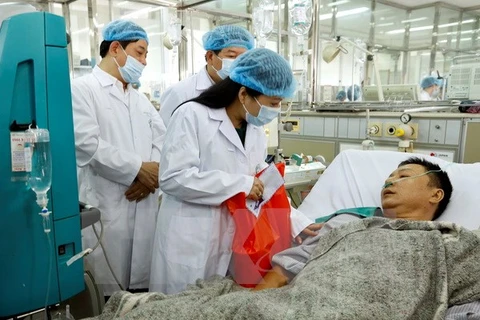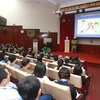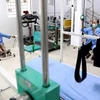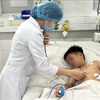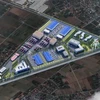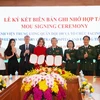 More than 70 hospitals nationwide that conduct kidney dialysis fail to follow proper procedures for liquid quality management and testing regulations, according to the Health Ministry (Photo: laodong.vn)
More than 70 hospitals nationwide that conduct kidney dialysis fail to follow proper procedures for liquid quality management and testing regulations, according to the Health Ministry (Photo: laodong.vn) Hanoi (VNS/VNA) - More than 70 hospitals nationwide that conduct kidney dialysis fail to follow proper procedures for liquid quality management and testing regulations, according to the Health Ministry.
Associate Professor Doan Ngoc Hai, head of the National Institute of Occupational and Environmental Health under the Health Ministry said that the recent water sample testing conducted by the institute found that the Reverse Osmosis (RO) filter system used at hospitals is an open system with several different steps. Each step might cause risks of water pollution. It is very difficult for the hospitals to maintain water quality during kidney dialysis procedures.
He said that hospitals did not conduct regular water quality supervision and fully test water figures. One reasons for this was that their budgets were limited due to low incomes from kidney dialysis service.
Most of the hospitals hired service companies to maintain the system. Staff of these companies, however, often lacked professional skills and were not trained to control risks. Therefore, the water quality of kidney dialysis system was not ensured by maintenance, he said.
“We visited the RO filter systems at many hospitals in Vietnam and leading hospitals in Singapore,” he said. “We can see that the system of almost all hospitals in Vietnam does not ensure quality or is unstable. As a result, there is a high amount of bacterial contamination.”
According to Associate Professor Hai, poor quality water for the RO filter system directly affects patients’ health and reduces treatment efficiency, even causing fatalities.
In June this year, eight patients died in Hoa Binh General Hospital while they were receiving kidney dialysis in one of Vietnam’s most serious medical incidents in recent memory. Water used for kidney dialysis did not meet necessary health standards.
Investigations revealed that the company which maintained and replaced the RO filter system of dialysis machines used chemicals to purify the system. During the process, however, the machines’ water supply tubes were not purified carefully, leaving chemical residue. After pasteurisation of the RO filter system, the company did not check the quality of water samples before handing the system over to the hospital.
According to National Institute of Occupational and Environmental Health, the international standard for the water source to produce dialysis water requires the water to be clean and drinkable. In Vietnam, most water doesn’t meet this standard.
“70 percent of the water source does not meet the standard,” Hai said. “We have warned that hospitals must regularly supervise and test water quality but many of them cannot do it due to lacking testing budget.”
Maintenance of water for dialysis must be carefully considered because it relates to human life, he said.
The World Health Organisation has approved an instruction on RO water quality supervision for kidney dialysis, which will be conducted by the Institute of Occupational and Environmental Health.
The institute had learned from conducting regulations on water quality supervision, visiting the RO system of Singaporean hospitals and setting up trainings on RO systems with participation of leading experts, Hai said.
The trainings aimed to help trainees understand potential calamities in kidney dialysis treatment and water quality standards applied in Vietnam and in the world, he said.-VNA
VNA
